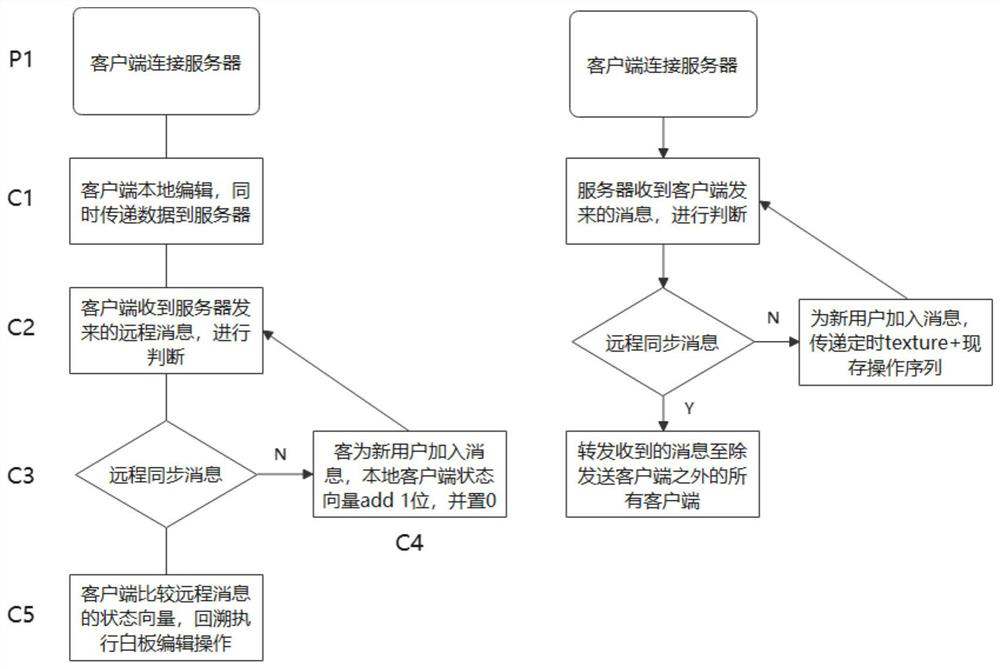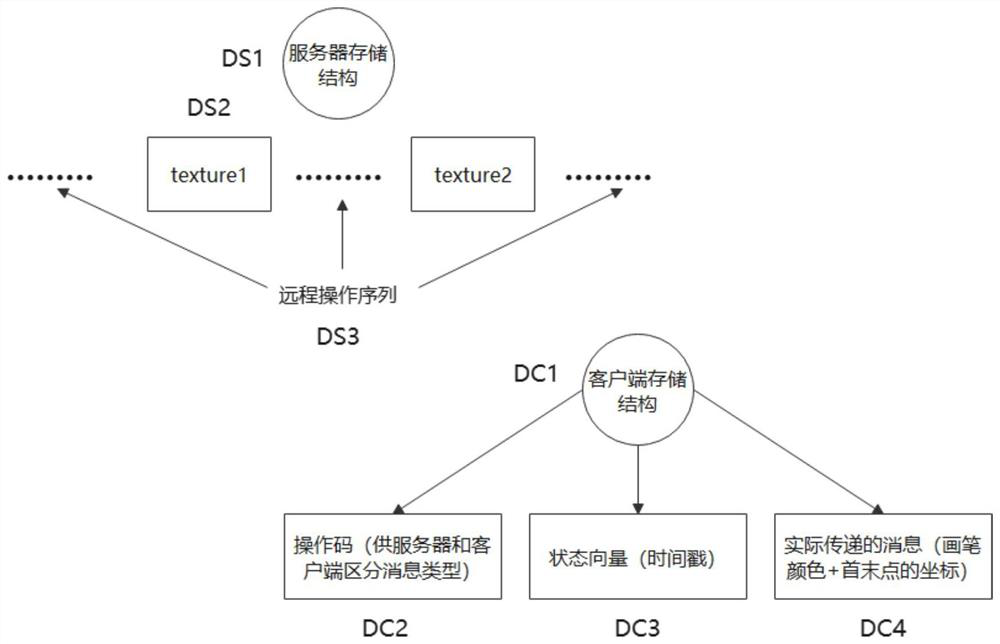AST-based method applied to VR conference collaborative whiteboard editing task
A whiteboard and editing technology, applied in data processing applications, input/output process of data processing, input/output of user/computer interaction, etc., can solve problems such as inconsistency of multi-client images, and avoid the decline of operating efficiency and smooth operation. Sexual guarantee, the effect of reducing the load
- Summary
- Abstract
- Description
- Claims
- Application Information
AI Technical Summary
Problems solved by technology
Method used
Image
Examples
Embodiment 1
[0061] Example 1: Implementation when no new user joins
[0062] Proceed as follows:
[0063] (1) Each client establishes a connection (P1) with the server and enters the same room, and the client continues to monitor the messages from the server;
[0064] (2) For local whiteboard editing on the client side, you can pick up different brushes / erasers. When performing editing operations, the local state vector is +1 at the corresponding site, and the current state vector, operation code (0), and operation behavior (two coordinate points + current editing state) as a message, sent to the server (C2), to be processed by the server, and the local operation sequence (state vector + operation behavior) stores this operation.
[0065] (3) The server receives the message from the client, analyzes it (S1), and the operation code is 0, which is a remote synchronization message (S2), saves the operation part (state vector + operation behavior) in the server cache, and forwards the messag...
Embodiment 2
[0079] Example 2: Implementation when a new user joins
[0080] Proceed as follows:
[0081] (1) A new user connects to the server and sends a message to the server.
[0082] (2) The server receives the message and judges that it is a new user joining message. At this time, it transmits the timing texture+existing operation sequence to the client; at the same time, it broadcasts the new client joining message to other clients.
[0083] (3) The new client receives the server-side message, replaces the local texture with the texture sent by the server, and executes the received operation sequence in sequence.
[0084] (4) Other clients receive the server message and judge that a new user has joined the message. At this time, the size of the local state vector is +1, and the last position is 0.
[0085] (5) All subsequent operations are as in Example 1.
[0086] The invention provides an AST-based method applied to collaborative whiteboard editing tasks in VR conferences, whic...
PUM
 Login to View More
Login to View More Abstract
Description
Claims
Application Information
 Login to View More
Login to View More - R&D
- Intellectual Property
- Life Sciences
- Materials
- Tech Scout
- Unparalleled Data Quality
- Higher Quality Content
- 60% Fewer Hallucinations
Browse by: Latest US Patents, China's latest patents, Technical Efficacy Thesaurus, Application Domain, Technology Topic, Popular Technical Reports.
© 2025 PatSnap. All rights reserved.Legal|Privacy policy|Modern Slavery Act Transparency Statement|Sitemap|About US| Contact US: help@patsnap.com


